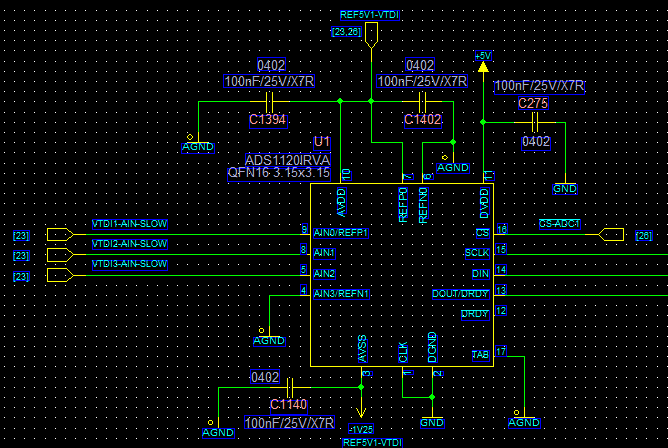Dear all,
I'm trying to get the fastest possible sample rate when using four channels on the ADS1120. However, the channels seem to influence each other.
The system is set up for 2000 SPS in turbo and single-shot mode with gain 64, frequency of the SPI is 1.5 MHz. The measurement is done in the following order:
1. ANIN0 - ANIN3
2. ANIN1 - ANIN3
3. ANIN2 - ANIN3
4. internal temperature sensor
The following SPI commands will be sent:
0x40-0x2C-0xD0-0x40-0x08 - wait 870 µs - 0x40-0x4C-0xD0-0x40-0x08 - wait 870 µs - 0x40-0x5C-0xD0-0x40-0x08 - wait 870 µs - 0x40-0x00-0xD2-0x40-0x08 - wait 2.25 ms - repeat
If I'm changing the input value on channel 2, the value on channel 3 is changing slightly, too.
To find out the reason I tried to sample always the same channel 2:
0x40-0x5C-0xD0-0x40-0x08 - wait 870 µs - 0x40-0x5C-0xD0-0x40-0x08 - wait 870 µs - 0x40-0x5C-0xD0-0x40-0x08 - wait 870 µs - 0x40-0x5C-0xD0-0x40-0x08 - wait 2.25 ms - repeat
But even with this I got different results:
Channel 1: -106 digits
Channel 2: -172 digits
Channel 3: -185 digits
Channel 4: -188 digits
If I'm changing the wait time from 870 µs to 5 ms the four results will be equal to -100 digits, which is the correct result according to the input voltage.
Can anybody explain this behaviour?
Is there a settling time required between changing the channel and starting the conversion?


